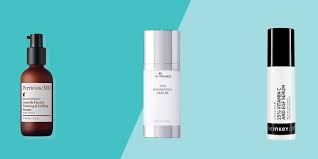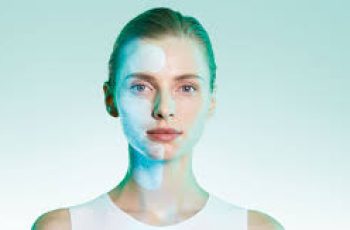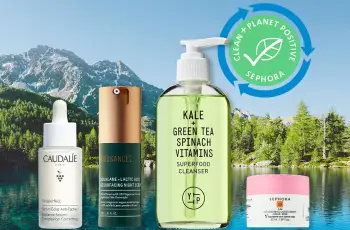
Growth Factors in Skin Care: What You Need to Know
When it comes to skin care, growth factors have become a popular ingredient for antiaging. But which growth factors really work best?
This article breaks down what growth factors are, how they help your skin, and the challenges of using them in topical products.
What Are Growth Factors?
Growth factors (GFs) are proteins or steroid hormones made by cells such as keratinocytes, fibroblasts, and immune cells. They act as signals, telling cells to grow, divide, or repair themselves.
This is why they’re crucial for healthy, youthful skin.
These factors regulate gene activity and communication between cells. Because of this, growth factors help skin cells multiply, move, and change to maintain skin’s structure and function.
Different Types of Growth Factors in Skin
There are many growth factors, each with a unique role. Some help rejuvenate old skin cells like keratinocytes and fibroblasts, improving their function.
However, GFs don’t work in isolation; they act together in complex ways.
In skin, growth factors are mainly epidermal-derived or dermal-derived. Both types have distinct effects on skin health and aging.
Most skin care products contain only one or two types, but natural skin benefits from multiple GFs working together.
The History: SkinMedica and Growth Factors
SkinMedica was the pioneer in putting growth factors into skin care. Their formulas use “Tissue Nutrient Solution” (TNS), a blend of different growth factors derived from fibroblasts.
TNS products mainly contain dermal-derived GFs.
Newer formulas, like SkinMedica’s TNS-MR, offer a broader range of growth factors, combining epidermal and dermal types for better antiaging effects.
This makes TNS Advanced+ Serum one of the most effective growth factor serums on the market.
How Do Growth Factors Benefit Your Skin?
Growth factors stimulate fibroblasts to produce collagen, elastin, and glycosaminoglycans. These are essential molecules that give skin its firmness, elasticity, and hydration.
As we age, these components decline, causing wrinkles, sagging, and thinning skin. Using growth factor serums can help reverse these signs by boosting skin’s natural repair and renewal processes.
What Growth Factors Do in Skin Care:
Act locally near their production site to influence nearby cells
Regulate cell growth, proliferation, and differentiation
Bind to specific receptors on target skin cells
Boost production of collagen, hyaluronic acid, and elastin
Speed up healing of damaged skin
Promote smoother, younger-looking skin
Increase cell turnover to shed older skin layers
Common Growth Factors Found in Skin Care
Here are some of the most common growth factors used in products:
Epidermal Growth Factor (EGF)
Fibroblast Growth Factors (FGFs)
Insulin-like Growth Factor (IGF-I)
Keratinocyte Growth Factor (KGF)
Platelet-Derived Growth Factors (PDGF)
Transforming Growth Factor alpha (TGF-α)
Transforming Growth Factor beta (TGF-β)
Vascular Endothelial Growth Factor (VEGF)
Each type targets different skin functions and layers, offering varied benefits.
Which Growth Factors Are Best for Antiaging?
Among all, Transforming Growth Factor beta (TGF-β) has the strongest research supporting its role in antiaging. It effectively stimulates collagen production and skin repair.
Platelet-derived growth factors found in exosomes also show promise in reversing signs of skin aging. The debate continues on whether stem cells, exosomes, or growth factors deliver the best results.
Are Growth Factor Serums Worth the Cost?
Growth factor serums tend to be pricey. Their value depends on many factors such as:
How well they’re formulated
How fresh the product is
Proper storage conditions (e.g., refrigeration)
The other products used alongside them in your skin routine
Poor formulation or improper storage can reduce their effectiveness, making expensive serums less worthwhile.
Challenges in Growth Factor Skin Care Formulation
Many issues limit the benefits of growth factors in topical products:
GFs are large molecules, making it hard to penetrate deep into the dermis where fibroblasts live
They are unstable in bottles or jars, breaking down before use
Protease enzymes in skin can degrade them quickly
Free radicals damage growth factors before they act
Some products don’t deliver GFs to their target receptors
Growth factors have a short half-life, losing activity fast
These factors mean the formulation, packaging, and application order are critical for success.
How Your Skin Care Routine Affects Growth Factor Performance
Your routine can boost or block growth factor effectiveness. For example, acidic cleansers lower skin pH, which may inactivate growth factors unless balanced with a higher pH moisturizer.
Other elements influencing GF performance include:
Skin pH levels
Presence of occlusive ingredients that lock in moisture
Use of penetration enhancers that help delivery
Presence of heparan sulfate, which stabilizes growth factors
Overall skin barrier health
Choosing compatible products and layering them properly is key.
Are Growth Factors Safe in Skin Care?
Growth factors are exciting but also controversial. We lack complete knowledge about their safety in cosmeceuticals.
Certain growth factors, like EGF, bind to receptors found in some skin cancers, raising theoretical risks. Some products advertise EGF without clear safety data, which concerns experts.
While no direct link between GF serums and skin cancer has been proven, caution is advised—especially for those with a history of skin cancer.
Important Safety Notes
Some GFs (EGF, TGF-α, FGF, VEGF, PDGF) may promote cancer cell growth under certain conditions
A 2014 lawsuit raised safety concerns but was dismissed in 2018
If using growth factors, monitor your skin for unusual growths or changes
Consult a dermatologist if anything suspicious appears
How to Choose the Right Growth Factor Product
The best way to select growth factor serums is by knowing your skin type and needs. The Baumann Skin Type system helps match you to products that suit your skin’s unique biology.
Taking a skin type quiz and getting dermatologist-recommended routines can guide you to the right growth factor products, whether affordable or luxury.
Growth Factor Products to Consider
Here are some popular growth factor creams and serums:
Neocutis BIO CREAM FIRM RICHE – Moisturizing and firming cream, $83
Neocutis BIO GEL FIRM – Lightweight moisturizing hydrogel, $83
Neocutis MICRO GEL – Intensive moisturizing hydrogel, $207
SUZANOBAGIMD Retivance Skin Rejuvenating Complex – $150 (out of stock)
Biopelle Tensage Stem Cell Cream – $180
EltaMD PM Restore Moisturizer – Affordable $17 option
ISDIN Age Contour – $120 antiaging cream
Final Thoughts on Growth Factors
Growth factors can be powerful allies against skin aging, helping restore collagen and elasticity. However, their success depends heavily on formulation, stability, and proper routine integration.
Not every growth factor serum works the same for everyone. Using products tailored to your skin type and monitoring your skin’s reaction is essential for safe, effective results.
Want to find the best growth factor products for your skin? Take the Baumann Skin Type quiz today and discover dermatologist-approved options tailored just for you!


